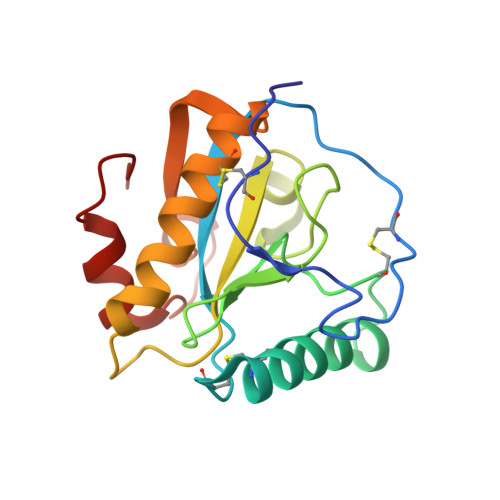Structural basis of heparin binding to camel peptidoglycan recognition protein-S
Sharma, P., Dube, D., Sinha, M., Dey, S., Kaur, P., Sharma, S., Singh, T.P.(2012) Int J Biochem Mol Biol 3: 86-94
- PubMed: 22509483
- Primary Citation of Related Structures:
3OGX - PubMed Abstract:
Short peptidoglycan recognition protein (PGRP-S) is a member of the innate immunity system in mammals. PGRP-S from Camelus dromedarius (CPGRP-S) is found to be highly potent against bacterial infections. It is capable of binding to a wide range of pathogen-associated molecular patterns (PAMPs) including lipopolysaccharide (LPS), lipoteichoic acid (LTA) and peptidoglycan (PGN). The heparin-like polysaccharides have also been observed in some bacteria such as the capsule of K5 Escherichia coli thus making them relevant for determining the nature of their interactions with CPGRP-S. The binding studies of CPGRP-S with heparin disaccharide in solution using surface plasmon resonance gave a value 3.3×10(-7) M for the dissociation constant (Kd). The structure of the heparin bound CPGRP-S determined at 2.8Å resolution revealed the presence of a bound heparin molecule in the binding pocket of CPGRP-S. It was found anchored tightly to the protein with the help of several ionic and hydrogen bonded interactions. Three sulphate groups of heparin S1, S2 and S3 have been found to interact with residues, Arg-31, Lys-90, Thr- 97, Asn-99 Asn-140, Gln-150 and Arg-170 of CPGRP-S. The binding site includes two subsites, S-I and S-II with cleft-like structures. Heparin disaccharide is bound in subsite S-I. Previously determined structures of the complexes of CPGRP-S with LPS, LTA and PGN also showed that their glycan moieties were also held in subsite S-I indicating that heparin disaccharide also represents an important element for the recognition by CPGRP-S.
Organizational Affiliation:
Department of Biophysics, All India Institute of Medical Sciences New Delhi, India.


















